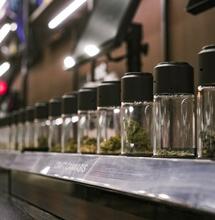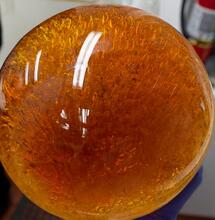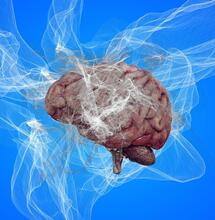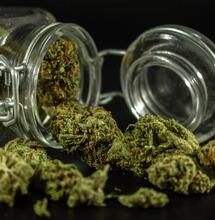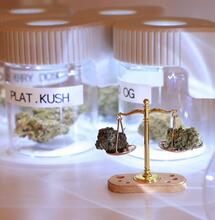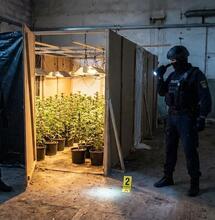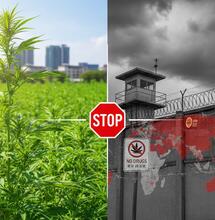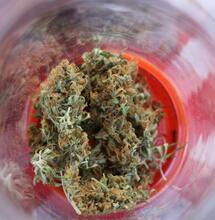Cannabis as a Stimulant, Depressant and Psychedelic
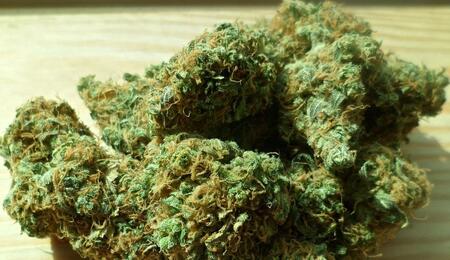
Cannabis can generate various effects when consumed, therefore it’s a bit tricky to classify it as only one type of drug. In general, each drug falls into one of four categories: stimulants, depressants, psychedelics, and opiates. Cannabis has the properties of three of these groups of drugs. But it doesn't fully belong in any of them.
Stimulants are drugs that elevate the mood and give energy and alertness. They are usually very addictive and some of their side effects include heart palpitations, insomnia and paranoia with consistent use. Cocaine and methamphetamine are two examples that belong to this group of drugs.
In contrast, depressants are drugs that slacken the brain and central nervous system. Alcohol and Diazepam (Valium) would be some of the examples in this category.
Psychedelics or hallucinogens are drugs that alter your perception of reality, and here the examples include LSD, psilocybin, peyote, MDMA, etc.
Opiates are the fourth and final group. These drugs are potent painkillers, and they can produce euphoric sensations. Some of the most addictive substances are grouped here, such as heroin and morphine.
When it comes to cannabis, it’s difficult to tell in which of the four categories it belongs. It doesn’t belong entirely to any of it, and at the same time it partially belongs to three of them. Much of this owes to the fact that there are hundreds of different cannabis cultivars. Some cannabis strains act as superior mood boosters. Others are excellent to relax the muscles and help get a better sleep, just like a good glass of beer. And most strains change your perception of time, which is part of what a hallucination is.
So, let’s take a look at how cannabis behaves as a stimulant, depressant and a psychedelic, and where is its mutual core with the three different categories of drugs.
Cannabis as a Stimulant
Stimulating drugs excite the central nervous system and this is often felt through symptoms such as rapid heart rate or the inability to fall asleep. Other bodily presentations from stimulants include increased temperature, anxiety, paranoia, and even seizures. But before a person experiences some of the negative side effects from taking stimulants, they do feel an elevation in the mood, more happiness, alertness and clarity of the mind.
The more stimulants you put in the body, the more the body will ask for it. That’s why drugs such as cocaine are so addictive and bottom line dangerous; they can cause neurological damage and threaten the healthy function of the heart and the cardiovascular system. In some tragic cases, problematic use can lead to heart failure.
While weed shares some of the same effects generated by classic stimulant drugs, it’s very unlikely that consumption will lead to any tragic outcome, however. Cannabis is treated as a stimulant because it can improve the mood, and it can increase the heart rate. In some cases, people do experience anxiety and even episodes of paranoia. Of course, this has to do a lot with the amount of THC taken and your personal tolerance to it. Strains with greater concentration of THC and chronic use of weed is usually what might trigger unwanted side effects. Those with heart problems should refrain from smoking anyway.
For a safe experience where you get the most of the stimulating effect without the palpitations and all the rest, it’s best to consume cannabis in moderation and adapt to the strain that you are using at the moment. For example, if the strain is stronger on THC—take less, if it’s weaker sativa—only then take more.
Cannabis as a Depressant
Depressants suppress the function of the nervous system as well as brain function. Relief from muscle tension or conditions such as anxiety are some of the other accompanying effects of depressants.
This group of substances is generally less addictive compared to other categories, although some types (like barbiturates) can certainly lead to dangerous health complications. Like all other substances, depressants too have a range of negative, mostly short-lived side effects. For example, too much alcohol can cause impaired locomotor function, nausea, and short-term memory loss.
Cannabis can produce similar positive and negative effects as depressants do. Those effects include muscle relaxation, sleepiness, dizziness, and short-term impact on memory.
In addition, habitual use of depressants can lead to developing a tolerance, which would be the same also for cannabis. That means taking more in order to be able to feel the same effects as before. There is also the aspect of dependency. For example, if you force cannabis use so that you can fall asleep easier, you may eventually end up having trouble to get a good night rest without it.
Cannabis as a Psychedelic
Cannabis is often viewed as a psychedelic, although its effects are much less pronounced than other classic psychedelics. Psychedelics or hallucinogen substances are those that alter the mind and distort your perception of time and space. Cannabis does this to a certain degree, in particular the altered perception of time.
What cannabis doesn’t do that other psychedelics can do, is generate any visual or auditory sensations that are not actually there in reality. For example, taking LSD can make you think and hear that aliens are invading the town. Or thinking that the TV is speaking to you personally. This is simply not true for cannabis.
Hallucinations can also be caused from other substances, such as alcohol. For example, alcohol dependency or abuse can lead to the person experiencing visual hallucinations.
Other symptoms that psychedelics produce include impaired motor skills, rapid heart rate, nausea, dry mouth, and detachment from self or reality. Cannabis can have some of these additional symptoms, just think of dry mouth and all the water you want to drink after consuming weed.
Finally, the use of cannabis does not lead to more severe conditions associated with risky use of psychedelics. There are cases where problematic, frequent consumption of psychedelics can lead to various forms of psychosis and permanent mental health issues. As a psychedelic, weed doesn’t do this, but it might cause both anxiety and depression, which should ultimately withdraw after taking a longer tolerance break, or worsen if you continue consumption as usual.
Conclusion
It’s important to remember that cannabis affects everyone differently, and that a lot of the effects from it have to do with the concentration of THC in the strain, the frequency of use, and your personal tolerance to weed.
Compared to other drugs or substances, regardless if they are stimulants, depressants or psychedelics, cannabis has far fewer risks from taking and is unlikely to have lasting negative effects on your health. When used wisely or with doctor’s supervision (if it’s for medicinal use), cannabis can actually improve your health greatly.
Like with other substances, abusing cannabis may certainly lead to experiencing some of the side effects that may not feel so good. To really get the optimal therapeutic and recreational benefit from the herb medicine, take it in moderation and stop usage when you don’t feel it’s doing you well at the moment.
Also read on Soft Secrets:
- 18 Things on Your Cannabis Bucket List
